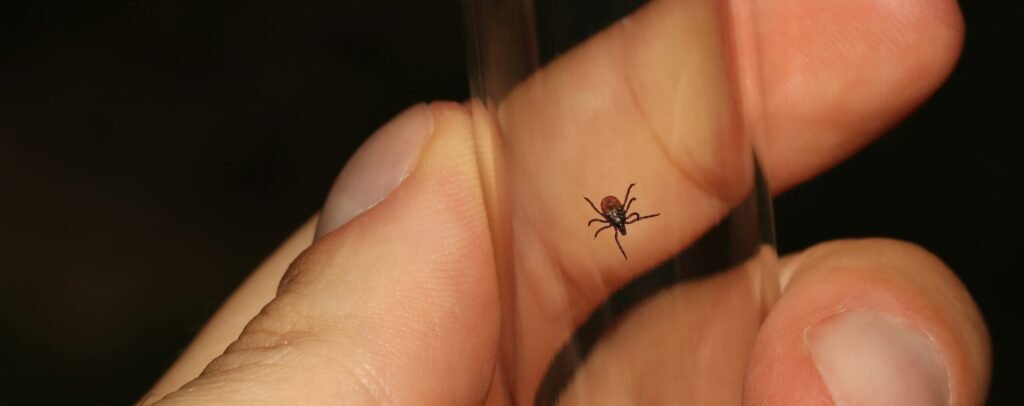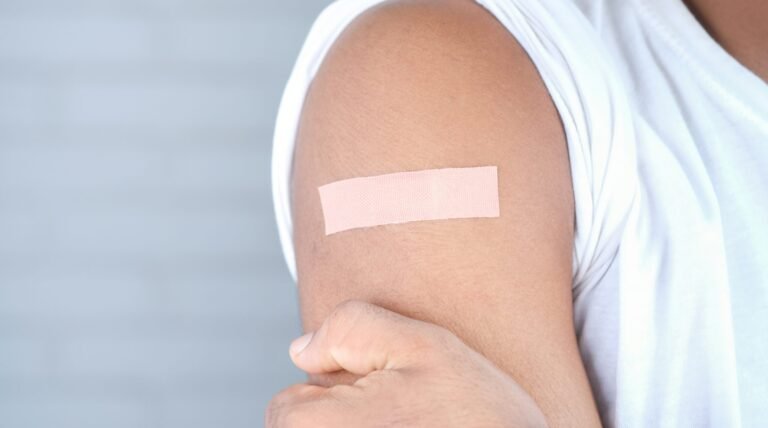If a person is experiencing a severe reaction after a tick bite, seek medical attention immediately.
Main points
- Most tick bites are harmless, but in some cases they can cause allergic reactions or transmit tick-borne illness
- Use an ether-containing spray to freeze and kill the tick as soon as possible, and allow it to drop off by itself
- Do not squeeze, agitate or forcibly remove a tick
Living in Australia, we are no strangers to the presence of ticks. These tiny critters can be found in our everyday outdoor environments like bushland, coastal scrub, grassy areas, parks and even in our own backyards. While most tick bites are harmless, it’s important to be aware of potential risks and know how to properly handle a tick bite.
What Are Ticks?
Ticks are tiny, blood-feeding parasites that belong to the same family as spiders: eek! They are commonly found attached to wildlife and pets, however ticks can also attach to passing humans. When a tick hops onto a host, it digs in for a firm grip and starts slurping the host’s blood. You won’t feel any pain because the tick is uses numbing and anti-clotting techniques to keep things flowing smoothly. If unnoticed, this can last days, and the tick will swell up as it fills up.
In Australia, the most common species of ticks that affect people are the paralysis tick (Ixodes holocyclus) and the brown dog tick (Rhipicephalus sanguineus). It’s important to note that not all ticks carry diseases, but some species do have the potential to transmit harmful pathogens.
Tick Bite Symptoms
When a tick bites, it secretes substances in its saliva that act as anaesthetic and anticoagulant – so you don’t feel any pain. However, some people develop a reaction to a tick bite after the tick has fallen off.
Some common tick bite symptoms:
- Redness and swelling: A natural immune system response to the tick’s saliva substances which can trigger inflammation – The redness will usually disappear once the tick falls off
- Lymph node swelling near the bite area
- Itching and pain at the site of the tick bite
- Localised rash with varying appearance from small red bumps to a larger, bullseye pattern known as erythema migrans.
Seek urgent medical attention if you experience any of the following severe symptoms:
- Flu-like symptoms such as fever, fatigue, and muscle aches. This is more commonly associated with certain tick-borne illnesses. These symptoms usually develop within a few days to a few weeks after the tick bite.
- Rash spreading away from the bite site may indicate DSCATT or other tick-borne illnesses.
Some symptoms of tick paralysis:
- Lethargy, weakness, poor balance
- Loss of appetite
- Dilated pupils
- Slurred speech
Some symptoms of allergic reaction to tick bites:
- Swollen throat
- Difficulty breathing
- Collapsing
If you experience any of these symptoms after being bitten by a tick, take measures to minimise potential health risks. Monitor the site of the bite for any signs of infection. Some tick-borne diseases can be effectively treated with antibiotics, but early diagnosis and treatment goes a long way.
Tick Bite: What To Do
If you discover a tick on your skin, it’s essential to remove the tick as soon as possible. The best method is to freeze the tick with an ether-containing spray. This causes the tick to become immobilised and eventually drop off on its own. You can find these sprays at most pharmacies in Australia. Freezing the tick and waiting for it to drop off on its own will reduce the risk of leaving parts of the tick embedded in the skin.
After the tick has dropped off, clean the bite area with antiseptic and keep an eye on it for any signs of infection or an allergic reaction. If you are concerned about the possibility of tick-borne illnesses or an allergic reaction, consult your healthcare professional. They can evaluate your symptoms, conduct any necessary tests, and recommend treatment.
Avoid using the following methods:
- Burning the tick
- Squeezing or twisting
- Using petroleum jelly, nail polish remover, or methylated spirits
The above methods can cause the tick to regurgitate its stomach content into your bloodstream, increasing the risk of disease transmission and health complications.
If you don’t have access to ether-containing spray, or if the tick is deeply embedded in the skin or if there are concerns about incomplete removal, it is advisable to seek medical attention from a healthcare professional.
If you can’t access medical attention or ether-containing spray, use a special tick-removal tool or fine-tipped tweezers. Grasp the tick as close to the skin as possible and gently pull upward with steady pressure. Avoid twisting or jerking the tick, as this can cause the mouthparts to break off and remain embedded in the skin.
After removing the tick, clean the area with antiseptic to prevent infection. Save the tick in a sealed container or plastic bag in case it needs to be identified later for disease testing.

How to Kill a Tick
If you come across a wandering tick in your home or on your clothing, it’s important to kill it to prevent any bites and to prevent infestations in your home. Here are a few methods you can use:
- Freezing: Carefully place the tick in a sealed bag and put it in the freezer for a few hours
- Alcohol: Submerge the tick in rubbing alcohol or ethanol
- Hot water: Carefully place the tick in a heat-proof container and pour boiling water over the tick
- Chemical insecticides: Products specifically designed to kill ticks can be found in various forms such as sprays, powders, or aerosols. When using chemical insecticides, always follow manufacturer instructions. Always consider the impact of harsh chemicals on the environment and your health.
- Natural remedies: Apply a few drops of essential oils such as tea tree, eucalyptus, or lavender oil directly on the tick. Exercise caution as the effectiveness of this method is unconfirmed.
- Diatomaceous earth: A fine powder made from fossilised algae commonly used as a garden product. Sprinkling the powder in areas where ticks hide will dehydrate and kill them. Exercise caution as the effectiveness of this method is unconfirmed.
Remember to dispose of the dead tick properly by sealing it in a bag and placing it in the trash.
When to See a Doctor
In many cases, tick bites don’t require medical attention. However, there are certain situations where you should contact your doctor:
- Any signs of an allergic reaction, infection, or concerning symptoms
- If you are unable to remove the tick with an ether-containing spray
- You are unsure if the entire tick has been removed
- If the tick was attached for an extended period of time
- If you are in an area known for tick-borne diseases
- Any concerns or questions regarding tick-related illnesses
Remember, early detection and treatment of tick-related illness can significantly improve outcomes, so it’s important to seek medical attention if you have any doubts or concerns.

FAQs
Q1: Can ticks jump or fly?
No, ticks cannot jump or fly. They crawl onto their hosts from vegetation. They’re attracted to the carbon dioxide and body heat emitted by animals and humans, which helps them locate their potential hosts.
Q2: Can pets get tick-borne diseases?
Yes, pets can get tick-borne diseases such as babesiosis, and ehrlichiosis. Use tick prevention methods for your pets, such as topical treatments or collars, and regularly check their fur.
Q3: Are all ticks in Australia dangerous?
Not all ticks in Australia are dangerous. However, it’s important to be cautious and take appropriate measures to prevent tick bites.
Q4: Can I get Lyme disease from ticks in Australia?
The bacteria that causes classic Lyme disease, Borrelia burgdorferi, is not found in Australian ticks. However, in Australia we have Lyme-like illnesses known as DSCATT (Debilitating Symptom Complexes Attributed to Ticks). Read more about DSCATT here.
Take Home
Although most tick bites are harmless, understanding the potential risks and knowing the correct way to address a tick bite is crucial. Promptly and safely removing ticks can help reduce the chance of disease transmission. Stay informed, stay cautious, and enjoy the great outdoors safely.
Read more about tick-related diseases here and learn some useful strategies to prevent tick bites here

If you have a question or if you’d like to share your experience, leave a comment below!

